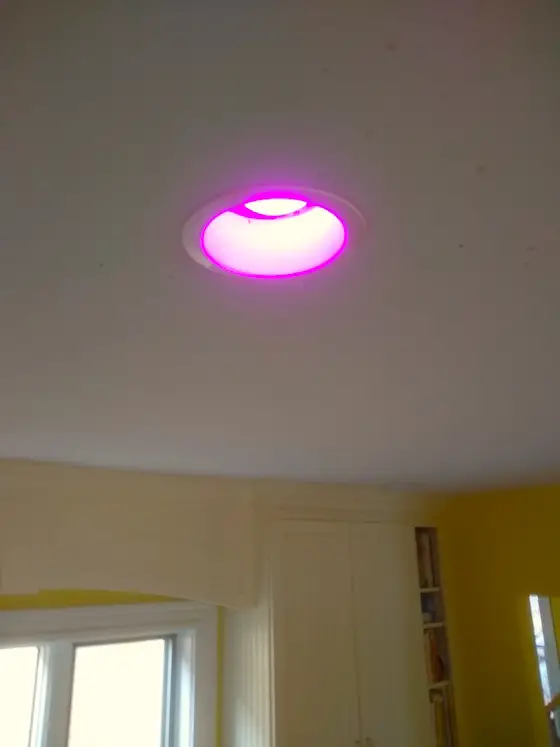Recessed Lights

Magenta is one of my favorite colors. This recessed light has the ability to change colors.
Recessed Lighting
Not long ago, I installed some delightful mini-recessed lights in my family room. My wife and I wanted to spotlight a seating area where we have a table and chair set that we use to play board and card games. Regular recessed fixtures were simply too overpowering for this area.
I visited a specialty lighting showroom and looked at my other options. They had a nice selection of downsized recessed fixtures. The biggest problem was whether they would provide enough light. I solved that easily. I purchased a fixture, a 50-watt bulb for it, and a trim.
I took these components home and temporarily wired them up so that the light would work. I then held the light up in the ceiling to see the level of light it produced. I intended to place four of them in a diamond shape all within four feet of each other. I could instantly tell they were going to be perfect. There is no substitute for realism. When in doubt about the capability of a light fixture, try to do this type of testing or at least reproduce the amount of bulb wattage in the space to see how dull or bright the finished light may be.

There are three levels of light in this kitchen, four if you count the bright lights under the stove hood! Photo credit: Tim Carter
Task Lighting in Kitchens
Well over 90 percent of work in kitchens is performed at countertops, islands or similar work surfaces. The last thing you want at these locations is poor lighting or shadows. In addition, most people do not want a kitchen ceiling loaded with surface light fixtures. Recessed lights solve both problems.
My kitchen measures 17 feet by 20 feet. I have 11 recessed fixtures each with a 75-watt bulb in them. Add to this the pendant fixture above my island that has three 75-watt bulbs and you have lots of light. It actually calculates out to 3.08 watts per square foot. Feel free to use this as a guideline in your own kitchen if you want a high volume of light. Be sure to switch the lights so that you can turn certain ones on at different times so you have different levels of light.
Column B308